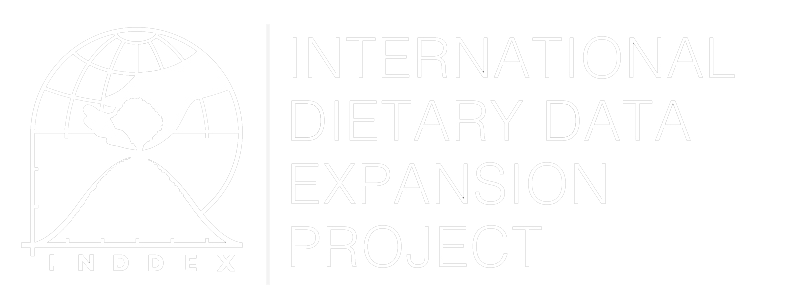Depth of Food Deficit kcal/capita/day
Overview
The indicator that measures the depth of food deficit (kcal/capita) represents the average per capita amount of additional energy (kcals) needed for undernourished individuals to meet the Average Dietary Energy Requirement (ADER) (FAO, 2000). This indicator is derived from the Prevalence of Undernourishment (PoU) indicator (Cafiero, 2014).
Method of Construction
Moltedo et al., (2014) described the calculation of the depth of food deficit indicator as follows:
"The average intensity of food deprivation of the undernourished, estimated as the difference between the average dietary energy requirement and the average dietary energy consumption of the undernourished population (food-deprived), is multiplied by the number of undernourished to provide an estimate of the total food deficit in the country and is then normalized by the total population. This usually is within the range of 100–400 kilocalories per day. When it is lower than 200 kcal, it is considered low; between 200 and 300, moderate; and above 300 kcal, high." (p.155)
Two sources of information can be used to obtain estimates of the depth of food deficit, or to approximate the per capita daily average dietary energy consumed in the population, which is one of the parameters needed to estimate the PoU:
- The Dietary Energy Supply from the Food Balance Sheets (FBS) and the three-year moving average of the depth of food deficit as part of the Suite of Food Security Indicators can both be accessed on the FAOSTAT website under the "Data" tab.
- Alternatively, the food consumption data collected in Household Consumption and Expenditure Surveys (HCES) can be used to estimate the depth of food deficit. It is one of several indicators included in the ADePT-FSM (Food Security Module) software package, a free standalone software developed by FAO and the World Bank that allows users to derive food security indicators from household survey data. The software download and corresponding documentation can be found on the FAO website. The Moltedo et al. (2014) book published by the World Bank discusses the depth of food deficit indicator (pages 59-60) and provides instructions for analyzing food security using household survey data, and Moltedo et al 2018, which offers instructions for using ADePT-FSM to generate diet-related indicators from household data.
Uses
The depth of food deficit is useful for problem identification, advocacy, and global and national monitoring. It is often used by researchers and practitioners to understand the degree of food insecurity in a country. Because it is available in the FAOSTAT Suite of Food Security Indicators for nearly all countries, it can be used to compare the severity of food deficit across multiple countries (Reddy et al., 2016).
Strengths and Weaknesses
The depth of food deficit is a cost-effective way to understand trends in food insecurity over time and across countries. This indicator does not measure dietary quality but represents the severity of dietary energy inadequacy.
Provided the HCES data that were used to estimate the PoU are representative at the subnational level, it is possible to disaggregate the depth of food deficit indicator below the national level. Not all HCES data are publicly available and easily accessible, and HCES data are typically collected only every 4-5 years.
The depth of food deficit indicator is also derived from PoU using FBS data from FAOSTAT. These data are publicly accessible and collected on an annual basis since 1961, but cannot be disaggregated sub-nationally, or at periods shorter than one year. When FBS data are used, the indicator will not capture intra-annual seasonality, price spikes, or other short-term shocks to the food system (Cafiero, 2014).
Data Source
The depth of food deficit derives from the PoU, and the PoU is derived from daily per capita average dietary energy consumption. The latter can be estimated from the dietary energy supply variable from FBS or using food consumption data from HCES. FBS from FAOSTAT are already paired with food composition data by FAO. When using HCES data, the user matches foods to nationally relevant food composition data to produce energy values.
Several types of underlying data are needed to estimate the depth of food deficit indicator. Energy requirements are based on normative data on the population's age and sex structure, height, and physical activity level. The coefficient of variation, a measure of how food is distributed within the population, is informed by HCES survey data.
Links to Guidelines
- Lele et al., (2016). "Measuring Food and Nutrition Security: An Independent Technical Assessment and User's Guide for Existing Indicators."
- Moltedo et al., (2018). Optimizing the use of ADePT-Food Security Module for Nutrient Analysis. Food and Agricultural Organization.
- Molteldo et al., (2014). Analyzing Food Security Using Household Survey Data: Streamlined Analysis with ADePT Software.
Links to Illustrative Analyses
- Timmer, (2013). "Food Security in Asia and the Specific: The Rapidly Changing Role of Rice."
- Reddy et al., (2016). "Towards sustainable indicators of food and nutritional outcomes in India."
- UNDP, (2015) "Human Development Report: Statistical Annex."
- Bonuedi et al. (2020). Enabling trade across borders and food security in Africa. Food Security.
